Of late, I have been doing a lot of driving as I travel around, and in my driving I listen to the radio and on the radio lately, I have heard an ad that, quite frankly, it just irks me.
It’s ad for something called CityEats, which is apparently is some new thing you can do online. You go online and go on to CityEats.org and you can not only make a reservation at the reservation at the restaurant, not only can you look at the menu at the restaurant, you can set up your entire dining experience in advance.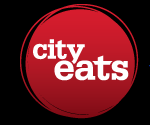
This is being done in conjunction with the Food Network, so one of the reasons that I find this radio ad so irksome is that it is elitist. This is about people who are truly foodies … and how they can make a meal into … oh, something that’s more than a meal, and spend a lot of money doing it.
So that’s what irks me. A little bit.
But what really irks me about this is their motto:
You are where you eat.
You are where you eat.
You know, besides the elitism of this – because you can only do this at the highest ranking of all of the restaurants, where the chi-chi chefs are – they’re just plain wrong!
You aren’t where you eat!
You are what you eat!
We know this!
The USDA tells us this – they used to have a food pyramid, now they have something called MyPlate.gov – it’s the same thing – and they tell you what you should eat, because we are what we eat.
Every nutritionist you know will tell you you are what you eat.
Your doctor, every time you go in for your physical, will tell you you are what you eat.
If you spend any time on social media, you’ll know this, because there are all these ads: “If you eat this one fruit, it will change your life.” Or “this one vegetable. It will change your life.”
If you go into a bookstore, one of the largest sections in a bookstore now is all the books on how to improve your life by what you eat.
It’s not where you eat.
It’s what you eat – and we know that, right?
We’ve been taught this since we were children.
If you put a bunch of crap into your body, you are going to become sick. That’s all there is to it. We all know it.
It’s not where you eat, it’s what you eat.
That’s what Jesus is talking about in this morning’s Gospel. It’s what you eat.
He says, “I am the bread of life. I am the bread of life.”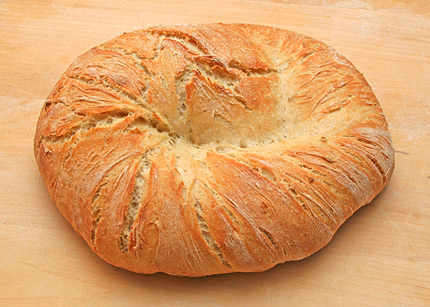
Here the Jews are, they’re all complaining. One of the things they’re complaining about is, “Wait a minute. Isn’t this Jesus, he’s the son of Joseph and we know Mary, and how dare he say he came down from heaven and he’s the bread of life?!?!”
The next thing they’re going to complain about is, “Eat his flesh?! Excuse me, we’re Jewish, we don’t do cannibalism …”
And the third thing they’re complaining about is, what does it mean to have eternal life? Because in their mind, bread from heaven is manna. It’s what God gave the Israelites in the wilderness. It’s manna. Well, you all know what manna is, right? Right? Do you all know what manna is? Manna is plant lice excretion.[1]
That’s all it is, and if you out in the Sinai Desert and you get there right after dawn, all the “dew” that’s on the ground? As soon as the sun comes up, that “dew” hardens, and it becomes kind of this flaky thing that you can eat and live on. I don’t recommend that you spend all your life living on this, but it worked for the Jews for forty years in the wilderness.
And so, the Jews are sitting there going, “We want the bread that God gave us in the wilderness.” And remember, why did God give it to them in the wilderness? Because the Israelites … well, they were complaining. “We want to go back to Egypt, because in Egypt, they’ve got better food. The fact that we were slaves … that’s a detail. We’re going to eat better.” And God comes down and he says, “You’re going to eat what I give you!” (Doesn’t that sound just like your parents? “You’re going to eat what I put on your plate!”)
Well, the thing about manna, about bug excretion, is that it only lasts for a day. You cannot keep it longer than that. It literally molds and crumbles and goes away. So God said to them, “Every morning, you’re going to go out and you’re going to collect up enough of this bug excretion so that you have enough to eat. Every single day. This is the bread from heaven. (Of course, on the eve of the Sabbath, you can go out and get two days’ worth, because you can’t do any of the collecting of food on the Sabbath.)”
That’s what the people are thinking of. They’re thinking, the “bread from heaven is bug excretion, and we have to go back to Sinai for this, and this isn’t going to happen.”
So they are confused, and they’re upset, and Jesus is standing there saying, “You don’t get it. I am the bread of life. You eat me, and you will have life eternal. I’m not good for just a day. I’m good for life eternal. You will not die, if you eat my bread.”
So they are even more confused. So he has to spend all this time explaining it to them again. “The bread that God gave to our ancestors was only good for a day. I’m good for eternity. I’m telling you this is necessary.”
As we gather here this morning, for the Eucharist, the Great Thanksgiving, as we head forward to that table, so that we can have the bread of life, I want us to spend a moment thinking: What does it mean to us?
It doesn’t really matter what kind of bread you have at this table. And it really doesn’t matter where you have this bread. It doesn’t matter where this table is.
I have had communion on three continents, in five countries.
I’ve had all kinds of bread. I’ve had white bread and wheat bread. I’ve had challah. I’ve had raisin bread. I’ve had cinnamon raisin toast bread. I’ve had sourdough bread. I’ve had big loaves and little loaves. I’ve had pita bread that tasted like cardboard. I’ve had the best biscuits. And I’ve had hard biscuits, that really kind of reminded me of hardtack. And I’ve had Butt Buns from ShrineMont for my Eucharist. I’ve had hard crackers, soft crackers – I had Oreos® once for communion. I’ve even had animal crackers for communion.
It doesn’t matter really what kind of bread it is, as long as it is the bread that is taken … blessed … broken … and given in Jesus’ name.
And it doesn’t matter where.
I have had bread in the greatest cathedrals of the world, and out in mud huts, under baobob trees. I’ve had bread out on the water. I’ve had it on a dock.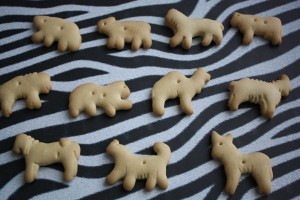 I’ve had it in the middle of a field. I’ve had it in the middle of a field of corn (now that’s an anomaly, because we had wheat bread that day). I’ve had it in great chalices and silver patens, and I’ve had it coming off of a little piece of wood. I had bread one time served to me on a leaf. That was the only thing we had.
I’ve had it in the middle of a field. I’ve had it in the middle of a field of corn (now that’s an anomaly, because we had wheat bread that day). I’ve had it in great chalices and silver patens, and I’ve had it coming off of a little piece of wood. I had bread one time served to me on a leaf. That was the only thing we had.
It comes down to, what is it that you’re really eating?
You’re eating Jesus. What does that mean to you?
• • •
In every parish where I have served, I have always, always encountered a child, a small child, who wanted to have communion, where the parents are going, “Oh, no. I don’t think the child is ready yet.” I always say, “Well, why not? What does the child need to do to be ready?” “Well, the child needs to understand what the Eucharist is,” the parents would say. And I would look at the parents and say, “Oh, goody. You explain to me what the Eucharist is.” And they look at me, saying, “Well … uh … “ And I reply, “uh, uh, uh, uh.” Invariably, the child who is told that he or she cannot have bread will end up at the altar rail, and I will be communing the person over here and the person over there, and this little hand – I’ve had this happen numerous times – this little hand will shoot up and grab a bunch of that bread and start shoveling it in as fast as possible, because that kid knew that that kid wanted Jesus.
When I was at Trinity in Arlington, our middle service was actually a children’s service. We allowed grown children to come. But it was designed for the children. We had a big, high altar and all, but no, we took a little table out, a table short enough so that the average 2-year-old could put his chin on the table to watch.
All the children would come up and be around us, and after a while, there got to be this little dispute over who was going to stand between me and the table, and I would put children there and clamp them between my knees, because they were the fidgety ones.
Then we had the children who wanted to so much to be involved in this that they would climb into my arms! So I would have a child in this arm and I’m trying to consecrate the bread, and I’m trying to say to the child, “Stick your arm out. Stick it out there. Yeah, stick it out for me so that we can do this.”
Then we would commune them. We always used the wafer that breaks up into 24 pieces. We would give the kids the bread, and they could have the wine, if they wanted, and then those children would go back, with their parents, and as the parents would walk forward, the children would get in line, so that they could have breakfast again. Because they understood that they were having breakfast with Jesus, and that it was important for them to do it as their community. But they also understood that they needed to have it with Mom and Dad as well. So we quickly came up with the rule, “I don’t care how many times the kid wants to eat, the kid gets as much Eucharist as possible.”
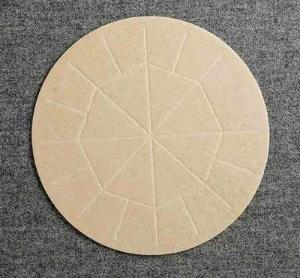 Well, one day, we did the Eucharist. We’re all done with the entire service, and all the children go and they gather in the aisle of this church. Now this is a huge church. It’s called Georgian architecture and it’s beautiful, and it’s got this long aisle, it’s like 35 pews long, and the kids are smack-dab in the middle, and they’re having a serious meeting. We’re talking 4-, 5-, 6- and 7-year-olds, and they are having a very serious meeting. They’re talking to each other like this.
Well, one day, we did the Eucharist. We’re all done with the entire service, and all the children go and they gather in the aisle of this church. Now this is a huge church. It’s called Georgian architecture and it’s beautiful, and it’s got this long aisle, it’s like 35 pews long, and the kids are smack-dab in the middle, and they’re having a serious meeting. We’re talking 4-, 5-, 6- and 7-year-olds, and they are having a very serious meeting. They’re talking to each other like this.
I’m standing off to the side, and I finally say to one of the parents, “Do you have any idea what’s going on out there? Do you have any idea at all?” And she said, “Yeah, the kids are upset.” And I said, “Well, what are they upset about?” She said, “You didn’t give them any triangles this morning.” Because when you break the large wafer? Some of them come out as triangles. (Some of them come as what was a triangle, but the top is lopped off – I don’t know if that’s a rhomboid or whatever it’s called.) But some of them were triangles. We had been asking the kids, “Circle or triangle? Circle or triangle?” And they got to choose what they got. Well, I didn’t have any triangles that morning, because nobody gave me the big wafers. I only had the little wafers – you know, like we use.
These children were so upset that they thought they had done something wrong. Because they didn’t have breakfast with Jesus. Thankfully, one of the wardens came up to me and he leans over and he says, “You know, Lauren, you can make a triangle out of a circle.” And I was like, “Oh! Why, by God, you’re right!” I said, “Go get the kids!” So I gathered up all the kids and I took all of my little wafers, and I stood there and very patiently broke off pieces, and then I was asking, “Triangle or circle? Triangle or circle? Triangle. Triangle. Triangle.” Because they knew what this was about. They knew that this was Jesus, and Jesus was so important to them that they were going to have a meeting – in protest – until they got what they wanted!
How many of you come to the table that knowing of what you’re getting, and that certain of what it means? How many of us come to the table knowing that Jesus is what is going to sustain us? That the first time we had Jesus, we got the promise of eternal life, and that having Jesus now – at that table – that’s what is going to sustain us! Because when you bring Jesus into you, when you accept Jesus fully, when you eat Jesus fully for breakfast … it changes your life.
I dare you to come to the table and have Jesus – to come forward as the Body of Christ to eat the Body of Christ – and to go out of here an unchanged person. I double-dog dare you to do that.
You have Jesus, and you walk out of here, and your life is changed. Because you have made a commitment to God, and God has made a commitment to you.
And if you walk out of here and nothing is different in your life, then we need to have a talk about what you’re doing here.
This is the most important thing you do. I don’t care if you do it every day, if you do it every week, if you do it once a month, if you do it once a year – that moment, when you take Jesus in your hands, and when you put Jesus in your mouth, and when you swallow Jesus, you are swallowing everything in the New Testament. You are swallowing God’s promise to you. It’s not some promise out there – it’s a promise in here (touching chest). That’s what communion is.
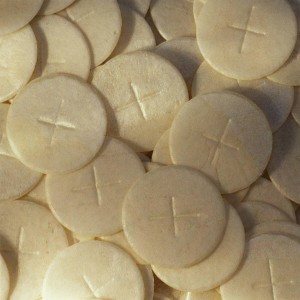 It doesn’t matter if it’s white bread or wheat bread or if it’s pita bread or if it’s a wafer or if it’s a graham cracker or if it’s an animal cracker. What is important is that you come together and have Jesus as the promise of life, so that you can go out into the world and share that promise with the world.
It doesn’t matter if it’s white bread or wheat bread or if it’s pita bread or if it’s a wafer or if it’s a graham cracker or if it’s an animal cracker. What is important is that you come together and have Jesus as the promise of life, so that you can go out into the world and share that promise with the world.
What matters is that you come to the table.
Which leads me to suddenly think that perhaps CityEats is right. Perhaps where you eat is important. Not which restaurant. Not in a formal setting like here. You know, it could be outside, it could be in Africa, in Haiti, or Honduras, or Kenya, or England, or France, or anywhere in this country, or anywhere in the world. As long as you’re coming to the table to have something that has been taken … blessed … broken … and given … you’re having Jesus. Inside of you. Taking over your life. So that when you go out, you have life to share with one another.
You are what you eat.
And I guess you are where you eat.
As long as that where is at a table. In Jesus’ name.
Amen.
Sermon preached on the 11th Sunday after Pentecost, Proper 14, Year B, at Church of the Good Shepherd, Blue Grass, Va., 12 August 2012.
[1] From Barbara Brown Taylor’s Bread of Angels, Cowley Publications, 1997. In the sermon, I incorrectly quoted Taylor as saying manna was “bee spit.” I was wrong. It is, she says, the excretion of plant lice.




